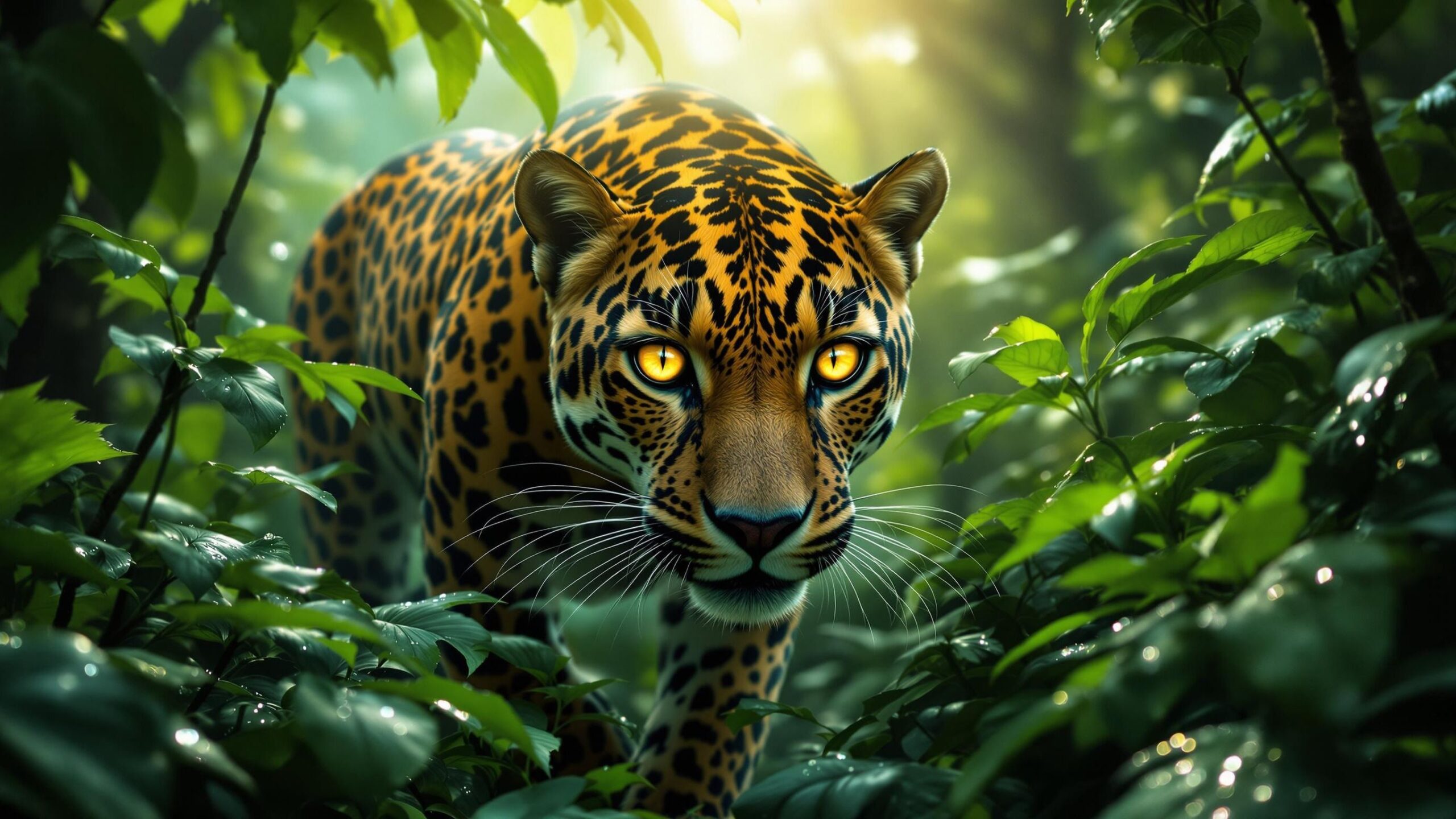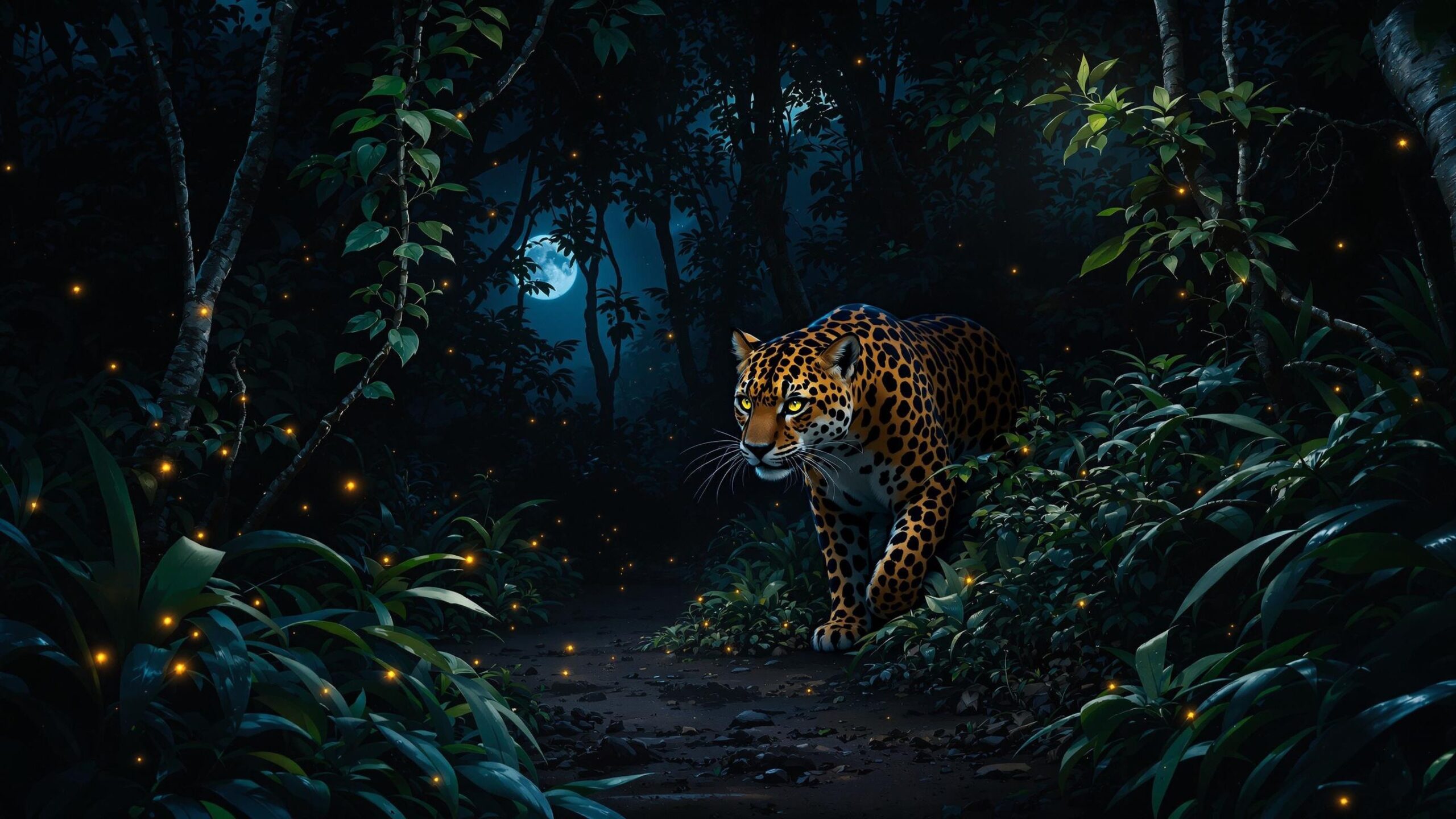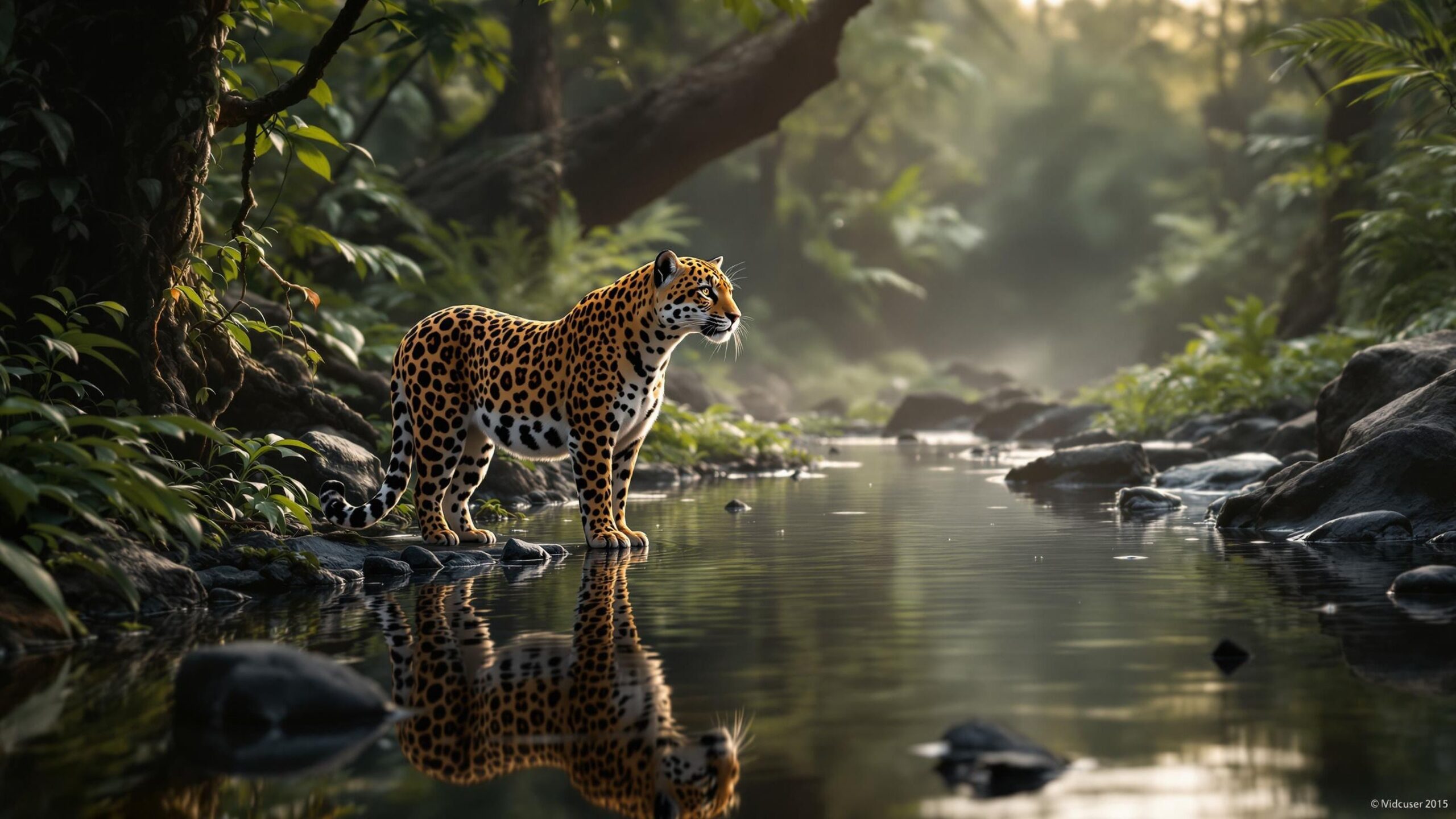Javan Leopard: The Vanishing Ghost of Java’s Forests
Deep within the mist-covered peaks and humid forests of Indonesia’s most populous island, a rare and mysterious predator prowls—the Javan leopard. Known scientifically as Panthera pardus melas, this secretive subspecies of leopard is as elusive as it is endangered. As one of the last apex predators on the island of Java, the Javan leopard holds a unique and fragile position within its ecosystem, standing as a living link to a wilder past.
Small in size but powerful in presence, this leopard is native only to Java and has adapted to the island’s shrinking, fragmented forests with extraordinary stealth and resilience. Often seen only through camera traps or fleeting shadows, the Javan leopard is not just a marvel of evolution but also a poignant symbol of survival under pressure.
A Leopard Apart: Understanding the Subspecies
The Javan leopard is a genetically and geographically distinct subspecies of the leopard (Panthera pardus), distinguished by its isolated evolution on the island of Java. Its subspecies name melas, meaning “black” in Greek, refers to the higher-than-average frequency of melanism in the population—a genetic condition that causes an all-black coat.
While not all Javan leopards are melanistic, the black morph is more common here than in most other leopard populations. Even the black leopards retain their characteristic rosettes, which are subtly visible against their dark coats under certain lighting. Whether spotted or black, the Javan leopard is a stunning example of natural adaptation. This subspecies is generally smaller than its mainland cousins. Males typically weigh between 110 and 140 pounds, while females are slightly lighter. Their build is lean and agile, perfectly suited for navigating Java’s rugged terrain, from lowland tropical forests to steep volcanic slopes.
A Habitat Under Siege
The Javan leopard was once widespread across Java, which was blanketed in rich, ancient forest. Today, Java is the most densely populated island in Indonesia, with more than 140 million people sharing the landscape. As human populations and agriculture have expanded, natural habitats have shrunk to a fraction of their former range.
The remaining leopard populations are now confined to a patchwork of protected areas and remote forest fragments, including national parks such as Gunung Halimun-Salak, Meru Betiri, and Ujung Kulon. These forests are often isolated from one another by towns, farms, and roads, creating genetic bottlenecks and increasing the risks of inbreeding. Despite these challenges, Javan leopards continue to survive. They are versatile animals capable of adapting to different elevations and climates. They can live in lowland tropical rainforest, mountainous terrain, dry deciduous forests, and even degraded secondary woodland, as long as there is sufficient cover, prey, and minimal disturbance from people.
Behavior and Hunting Techniques
Like other leopards, the Javan leopard is solitary, stealthy, and secretive. It is mostly nocturnal, with most hunting and movement occurring at night, although daytime activity has been recorded in more secure habitats. During the day, leopards tend to rest in dense vegetation or in tree branches where they can remain undisturbed and watchful. Its diet includes a variety of prey, such as deer, wild boar, monkeys, birds, and smaller mammals like civets. The leopard’s role as an apex predator is crucial for maintaining the ecological balance. By keeping herbivore populations in check, it helps preserve the delicate health of the forest.
The Javan leopard is a master of ambush. It uses its camouflaged coat and silent footsteps to approach prey with astonishing stealth. When the time is right, it launches a swift and lethal pounce. If the kill is not immediately consumed, the leopard may drag it into undergrowth or up into a tree for safekeeping. Communication between Javan leopards is mostly non-verbal—scent marking, urine sprays, claw marks on trees, and occasional vocalizations like growls or coughs convey territory and reproductive status. These solitary cats avoid one another except during mating or when females are rearing cubs.

Cubs of the Canopy
Reproduction among Javan leopards can occur throughout the year, though specific peaks may coincide with seasonal changes in prey availability. After a gestation period of around 90 to 105 days, a female typically gives birth to a litter of one to three cubs in a well-hidden den—often in a rock crevice, hollow tree, or dense vegetation.
The cubs are born blind, small, and extremely vulnerable. They remain hidden and dependent on their mother for the first few months. During this time, the mother is highly secretive and protective, moving her young to new hiding spots if she senses danger. As the cubs grow, they begin to explore their surroundings and learn the skills they need to survive. By six months, cubs may start accompanying their mother on hunts, learning to stalk and kill. They usually become independent around 18 to 24 months, at which point they must leave their mother’s territory and find their own. This dispersal phase is risky, especially given the fragmented nature of Java’s remaining wilderness.
An Apex Predator in a Human-Dominated World
Java is a land of rice paddies, plantations, villages, and cities—many pressing against the last wild places. This reality forces Javan leopards to navigate a perilous world where encounters with humans can quickly turn deadly. Habitat encroachment and fragmentation are the biggest threats to their long-term survival, but direct conflict with people is also an issue.
Instances of livestock predation by leopards—particularly goats and chickens—sometimes lead to retaliatory killings. In rural communities where economic losses from even one animal can be significant, tolerance is limited. Occasionally, leopards are captured, injured, or killed when they wander too close to human settlements.
Still, it is important to note that Javan leopards do not typically seek out humans. Attacks are exceedingly rare and usually defensive. Their instinct is to avoid confrontation, not to initiate it. Conservation groups are working on community education programs to help reduce fear, promote coexistence, and offer solutions such as secure livestock enclosures.
Conservation: A Race Against Time
The Javan leopard is currently listed as Critically Endangered on the IUCN Red List. With estimates suggesting fewer than 250 mature individuals remaining in the wild, it is among the rarest big cats on the planet. Yet, despite its dire conservation status, hope persists.
Indonesia’s government has declared the Javan leopard a protected species under national law. Hunting, poaching, or trade in body parts is illegal and punishable by fines and prison time. However, enforcement can be inconsistent, particularly in remote areas where law enforcement is sparse and wildlife crimes go unnoticed or unreported. Non-governmental organizations (NGOs) and scientific researchers have stepped up to fill these gaps. Groups such as the Javan Leopard Conservation Project are conducting camera trap surveys, ecological studies, and community engagement programs. These efforts aim to better understand leopard behavior, track population trends, and identify critical habitats.
Creating ecological corridors—areas that connect isolated forest patches—is another major focus. By linking habitats, conservationists hope to allow leopards to move safely between territories, increasing genetic diversity and reducing the risk of inbreeding. Captive breeding is not currently a major strategy for the Javan leopard, due in part to its elusive nature and low numbers in captivity. Instead, the focus remains on protecting what’s left of its wild habitat and fostering local stewardship.
Cultural and Ecological Significance
In Javanese folklore, the leopard is sometimes viewed as a powerful forest spirit, a symbol of agility, bravery, and mystery. It appears less frequently in cultural tales than more common species like the macaque or monitor lizard, but where it does, it is often cast as a guardian of the forest—silent, noble, and wise.
Ecologically, the leopard plays a critical role. As a top predator, it helps maintain the balance between prey and vegetation. Its disappearance would have cascading effects on the island’s already delicate ecosystems. Without leopards to keep herbivore populations in check, overgrazing could damage young forest growth, leading to a loss of biodiversity and ecosystem resilience. In a world where large predators are vanishing at an alarming rate, the Javan leopard is both a treasure and a test. Can an animal so shy and shadow-bound survive amid one of the most densely populated human landscapes on Earth?

The Future of the Javan Leopard
The fate of the Javan leopard is not yet sealed. While its numbers are critically low, the potential for recovery remains—if action is taken swiftly and strategically. Protecting core habitats, connecting forest fragments, educating communities, and investing in long-term research are all essential steps.
International attention and funding also play a role. The more the world learns about this mysterious feline, the greater the chance that meaningful support will emerge. Ecotourism, if done carefully and ethically, could provide both financial incentives and wider awareness of the leopard’s plight. Above all, the future of the Javan leopard depends on the will of the people who share its home. Java’s forests are among the oldest in Southeast Asia, rich in biodiversity and cultural significance. Saving the leopard means saving much more—water sources, climate stability, medicinal plants, and spiritual heritage.
A Living Symbol of Wild Java
The Javan leopard is more than just a rare animal—it is a living emblem of Java’s natural soul. It moves silently through the undergrowth, unseen by most, leaving behind only paw prints and faint whispers in the trees. It is a creature of incredible beauty and importance, surviving in a world that has almost forgotten how to be wild.
Its continued existence reminds us that even on an island as developed and busy as Java, nature still has a place. But that place is shrinking fast, and the choices made now—by individuals, communities, and nations—will determine whether this ghost of the forest will continue to prowl the shadows or fade into myth. If you ever walk through a Javan rainforest and hear the sudden hush of birds, or the soft rustle of leaves where nothing is seen, remember: the leopard may be watching. And it is up to us to ensure that it always will.

